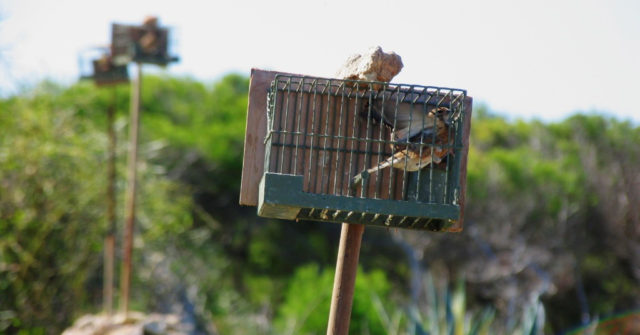In 2018, the European Court of Justice banned the practice of trapping protected songbirds. Malta defended the long-time practice by insisting that, from now on, birds would only be trapped for “scientific research.” Today, we’re looking at some of the groundbreaking discoveries that have been made thanks to this research.
Birds can fly
Until now, scientists believed birds travelled around by burrowing tunnels beneath the earth. But Maltese hunter-scientists monitoring the trapping sites noticed that birds arrived into the cages from the sky, leading them to discover that birds can fly.
“We believe they may have learned this behavior from aeroplanes,” hunter-scientist Professor Ġamri ‘ix-Xadina’ Grech told Bis-Serjetà.
Birds can sing
It turns out humans aren’t the only animals that can carry a tune. Through careful observation of trapped birds, hunter-scientists learned that these creatures emit melodious sounds.
“While impressive, their songs are a bit rudimentary, so we’ll be introducing them to the works of Mike Spiteri and Mary Rose Mallia so they can hopefully improve.”
Birds lay eggs
For thousands of years, no one in the entire world had ever seen a bird give birth. The most popular theory was that birds reproduced asexually by releasing their feathers into the air, which then grew into new birds.
“To solve this mystery once and for all, we paired a male and female bird to see if anything would happen. They started getting nasty so we put a sheet over the cage. Then after a while, one of the birds pooped out these things that were shaped like Cadbury’s Mini Eggs. We didn’t eat them because they came out of a bird’s ass, which is just as well because two weeks later, tiny little baby birds emerged from them. And now they’re also trapped in a cage, of course.”
Birds are weak
“Throughout our research, not a single bird has ever managed to bend the bars of its cage – which are pretty thin – and escape, which leads us to conclude that birds aren’t very strong.”
Trapping birds is fun
The hunter-scientists in charge of the bird trapping project said that imprisoning small, beautiful creatures in tiny cages gave them immense joy and satisfaction.
“It’s all for science, of course,” Prof. Ix-Xadina said.










